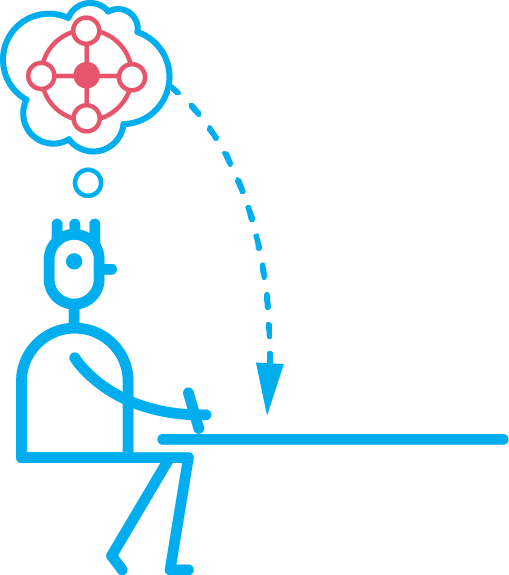Schemas and Memory
Inside every educators' head are subject schemas — the meaningful connections of individual facts. If we want students to develop such schemas, why not show them as part of our teaching?

‘Schema’ was once only a specialised topic of conversation; now this psychological term is seen as not only relevant but central, in the context of the growing focus on knowledge and memory.
This advice piece concentrates on how every educator’s power of explanation holds the key to developing their students’ own schemas.

Where the information being learned has a framework or structure that can be used to organise both the learning and the retrieval then memory is often considerably improved.
Michael Eysenck (ed) The Blackwell Dictionary of Cognitive Psychology 1994

Transmission

If knowledge is more than the mere collection of isolated facts — and if teachers have these facts neatly connected into personal schema — then why hide them from students? Now that teacher explanation is being recognised for its premier role in teaching, the transmission of subject schema is a pedagogy whose time has surely come.
The packets that organise information and make sense of experience are‘schemas’, the building blocks of cognition.
Daniel Goleman, Vital Lies, Simple Truths, Bloomsbury, 1985

Encoding

The original research by Allan Paivio (see here) on dual encoding has been replicated again and again since the 1970s. Simultaneous processing in the two channels (visual and auditory) means more information can be absorbed without causing any cognitive overload.
The message for teachers is clear: support your explanations with relevant conceptual images.
People learn better from graphics and words, than from words alone
richard e mayer, graphics for learning, clark, r. & lyons, c., 2004

Elaboration
Providing students with a visual schema gives them a framework for speaking and listening. Simply seeing the connections that link the facts together prompts and structures their explanations. This forging of meaning strengthens students’ personal schema. It also serves as a practical rehearsal for any future writing on the topic.
Elaboration strengthens learning and memory.
Henry Roediger, Brown C. & McDaniel M., Make It Stick, Belknap, 2013

Retrieval

The meaning created by the previous elaboration activity was, at the same time, strengthening the memory of the schema. Indeed, instead of being opposites — as many teacher contend — these are actually one and the same thing!
Redrawing the visual schema will strengthen it still further. Repeat the redrawing exercise at increasing time intervals to ensure it stays firmly lodged and accessible in long term memory.
Understanding is memory in disguise
Daniel Willingham, Why Students don't like school? , Jossey Bass 2009







